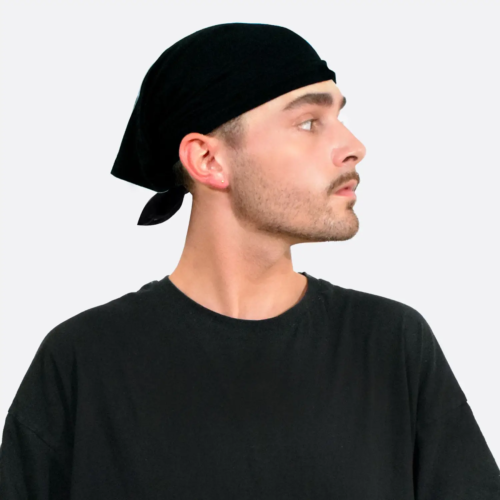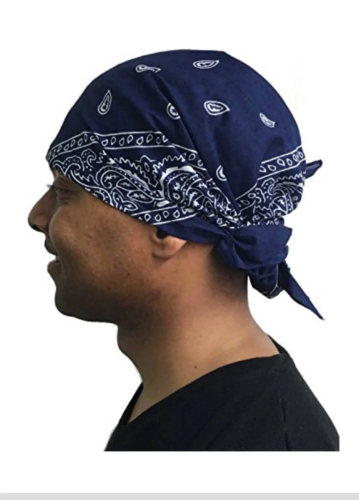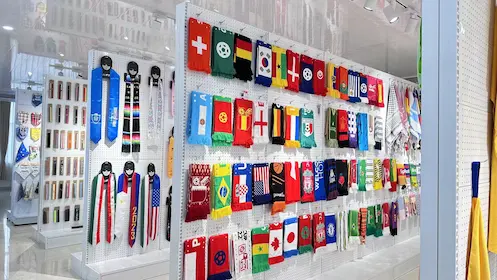Оглавление
Переключатьчто такое шейный гетр
Гетра на шею многофункциональный уличный платок из полиэстера, чистого хлопка, шерсти, кашемира или других специальных материалов в трубчатой форме. Используется для защиты шеи, лица и кожи ушей во время занятий спортом на открытом воздухе. Подходит для различных ситуаций, таких как походы, бег, катание на лыжах, езда на велосипеде, рыбалка, кемпинг, путешествия и т. д.
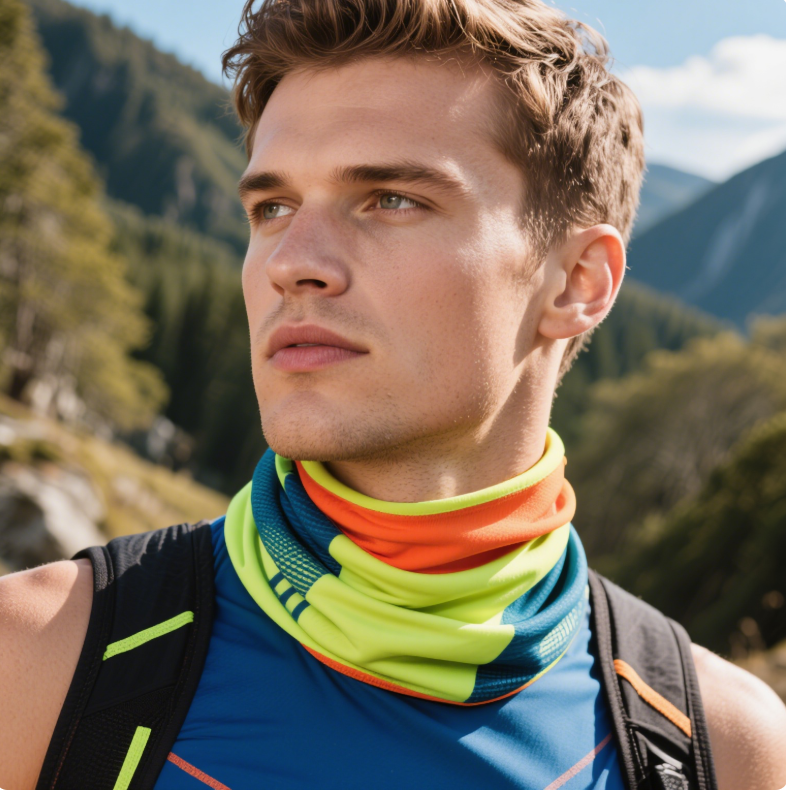
Функции и применение шейного гетра
Тепло: в холодную погоду шейный платок может обеспечить вам дополнительное тепло, чтобы не дать вашей шее замерзнуть. Ветрозащита: в ветреную погоду он может эффективно блокировать холодный ветер и защищать ваше лицо и шею. Защита от пыли и солнца: во время активного отдыха на свежем воздухе, например, походов по пустыне или пляжного отдыха, шейный платок может защитить вас от пыли и ультрафиолетового излучения.
В некоторых чрезвычайных ситуациях его можно использовать как временный жгут, повязку или материал для обертывания предметов, чтобы оказать определенную помощь в чрезвычайных ситуациях.
Наша шейная гетра Boyue имеет различные цвета, узоры и стили. Обеспечивая вам функциональную защиту, ее также можно использовать в качестве модного аксессуара, сочетая с одеждой для отдыха на природе, демонстрируя вашу индивидуальность и модный вкус, позволяя вам не только чувствовать себя комфортно, но и сохранять хороший имидж во время активного отдыха.
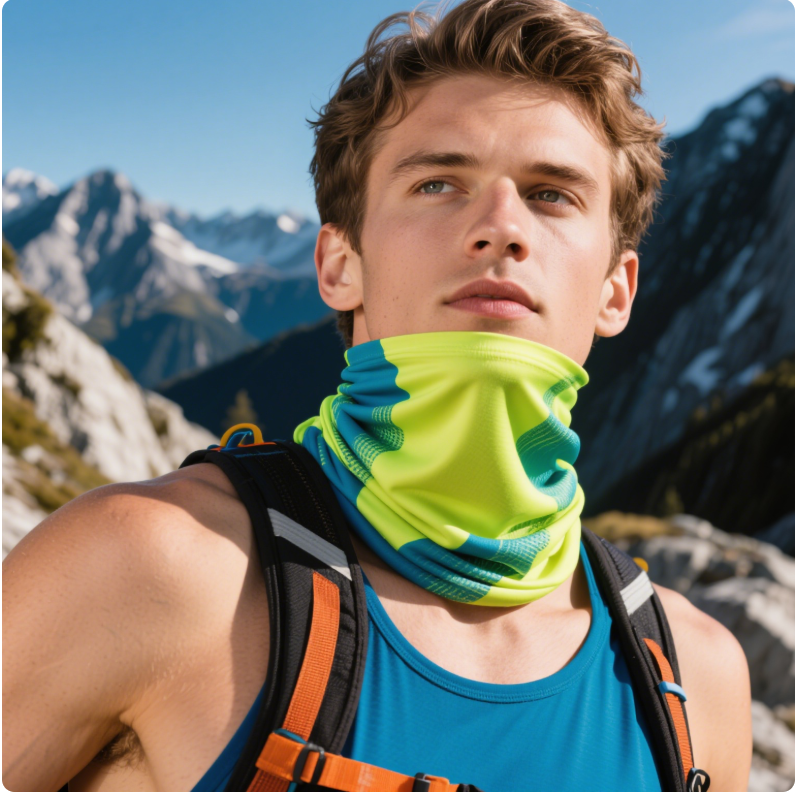
Материалы для шейных гетр
Материалы для шейных гетр различаются. Некоторые из них сделаны из цельных тканей, а некоторые из смешанных. Материал, который вы обычно используете, зависит от того, как вы хотите его использовать и в каком сценарии вы хотите его использовать.
Отдельные типы тканей
Полиэстер
Особенности: Эта ткань обладает хорошей износостойкостью, устойчивостью к складкам и быстросохнущими свойствами, что позволяет быстро впитывать пот с поверхности кожи и сохранять ее сухой. В то же время она также обладает хорошими характеристиками защиты от ультрафиолета, что позволяет эффективно блокировать повреждение кожи ультрафиолетом.
Применимые сценарии: подходят для различных видов активного отдыха, таких как пеший туризм, бег, езда на велосипеде и т. д., позволяя пользователям чувствовать себя комфортно в жаркую погоду.
нейлон
Характеристики: Высокая прочность, малый вес, мягкая и гладкая ткань, приятные ощущения. Нейлоновый шейный платок обычно обладает хорошей эластичностью и восстановлением, нелегко деформируется и обладает определенными водонепроницаемыми свойствами, что позволяет выдерживать небольшой дождь и росу.
Применимые сценарии: Обычно используется во время занятий спортом на открытом воздухе и путешествий, особенно в ситуациях, когда возможна влажная среда, например, во время альпинизма, кемпинга и других видов деятельности.
Спандекс
Особенности: Он обладает высокой эластичностью, может плотно прилегать к телу, растягиваться при движении тела и не будет создавать ощущения стеснения. Эту ткань часто смешивают с другими волокнами для повышения эластичности и комфорта шейного гетра, чтобы он мог лучше адаптироваться к различным способам ношения и движениям тела.
Применимые сценарии: Подходит для видов спорта, требующих частых движений шеей, таких как йога, пилатес и т. д., а также подходит для повседневного ношения, обеспечивая удобную посадку.
Хлопок
Особенности: Изготовленный из натурального хлопка, он обладает такими преимуществами, как мягкость, дружественность к коже и хорошая воздухопроницаемость, что позволяет коже дышать и обеспечивает комфорт при ношении. Кроме того, хлопок обладает сильной гигроскопичностью, что позволяет впитывать пот с шеи и сохранять ее сухой. Однако шейный гетр из чистого хлопка высыхает относительно медленно после намокания, а его эластичность относительно низкая.
Применимые сценарии: Подходит для ежедневного ношения, особенно для людей с чувствительной кожей, а также в условиях, где не слишком жарко и не наблюдается обильного потоотделения.
Модальный
Характеристики: Изготовлен из натуральной древесной массы с помощью специального процесса прядения, он мягкий и гладкий, превосходный на ощупь и известен как «искусственный шелк». Он обладает лучшей гигроскопичностью, чем хлопок, может быстро впитывать и рассеивать пот, а также сохраняет кожу сухой и комфортной. В то же время модал обладает хорошей эластичностью и прочностью, его нелегко деформировать, он облегает тело и свободно двигается.
Применимые сценарии: подходит для повседневной деятельности и некоторых легких видов спорта, обеспечивает комфорт при ношении и сохраняет хорошие характеристики после многократного ношения и стирок.
Акрил
Особенности: Внешний вид и ощущение акрила похожи на шерсть, поэтому его называют «искусственной шерстью». Он хорошо сохраняет тепло, имеет небольшой вес, не садится и не поедается насекомыми. Акриловый шейный платок также обладает хорошей светостойкостью и не выцветает на солнце. Однако акрил не такой гигроскопичный и воздухопроницаемый, как натуральные волокна, и легко генерирует статическое электричество.
Применимые сценарии: Часто используется в качестве замены шерстяным материалам и подходит для использования в качестве теплого шейного платка в холодную погоду, особенно для людей, страдающих аллергией на шерсть, но нуждающихся в тепле.
Шерсть
Особенности: Натуральный теплый материал с хорошими теплоизоляционными свойствами, который может согреть вас в холодную погоду. Шерсть также имеет определенную степень гигроскопичности, которая может впитывать пот на поверхности кожи, чтобы кожа оставалась сухой. Она также обладает естественными антибактериальными свойствами и может уменьшить образование запаха.
Применимые сценарии: в основном используется для активного отдыха на открытом воздухе в холодную погоду, например, катания на лыжах, зимних походов и т. д., чтобы обеспечить пользователям теплую и комфортную защиту.
Бамбуковое волокно
Особенности: Он хорошо впитывает влагу и пропускает воздух, он мягкий и гладкий, ощущается комфортно и имеет хорошее сродство к коже. Бамбуковое волокно также обладает естественными антибактериальными и противобактериальными функциями, которые могут эффективно подавлять рост бактерий и сохранять шейный гетр чистым и гигиеничным.
Применимые сценарии: подходит для ежедневного ношения и некоторых легких видов активного отдыха, особенно летом, позволяет пользователям чувствовать себя прохладно и комфортно.
Смесовые ткани
Некоторые шейные гетры изготовлены из смешанного материала 79% полиамида и 21% спандекса. Этот материал обладает эластичными и быстросохнущими свойствами, подходит для осени и холодной погоды, его легко хранить.
Смесь шерсти и полиэстера: Он сочетает в себе шерсть и полиэстеровые волокна, чтобы обеспечить дополнительное тепло и воздухопроницаемость. Шерстяной компонент помогает регулировать влажность и сохранять лицо сухим.
Вы также можете смешать полиэстер со спандексом, чтобы обеспечить быстросохнущие и износостойкие свойства, одновременно увеличивая эластичность. Смешивание хлопка с акрилом может улучшить сохранение тепла и долговечность, сохраняя определенную степень мягкости и воздухопроницаемости. Разумное соотношение различных материалов может удовлетворить ваши разнообразные потребности в производительности шейного гетра.
Размер шейного гетра
Обычно не существует строгого единого стандарта для размера шейных повязок. Длина стандартных взрослых моделей обычно составляет около 40-55 см. Более короткие модели могут быть близки к 40 см, в то время как более длинные могут достигать 55 см или даже больше. Длина в основном влияет на покрытие. Более длинный шейный повязка может лучше охватывать шею, лицо и другие части, обеспечивая вам более полную защиту. Ширина обычно составляет от 20 до 30 см. Более узкие модели составляют около 20 см, а более широкие могут достигать 30 см. Как правило, они составляют около 25 см. Ширина определяет комфорт и эффект покрытия при ношении. Более широкий шейный повязка может носиться как маска или шапка.
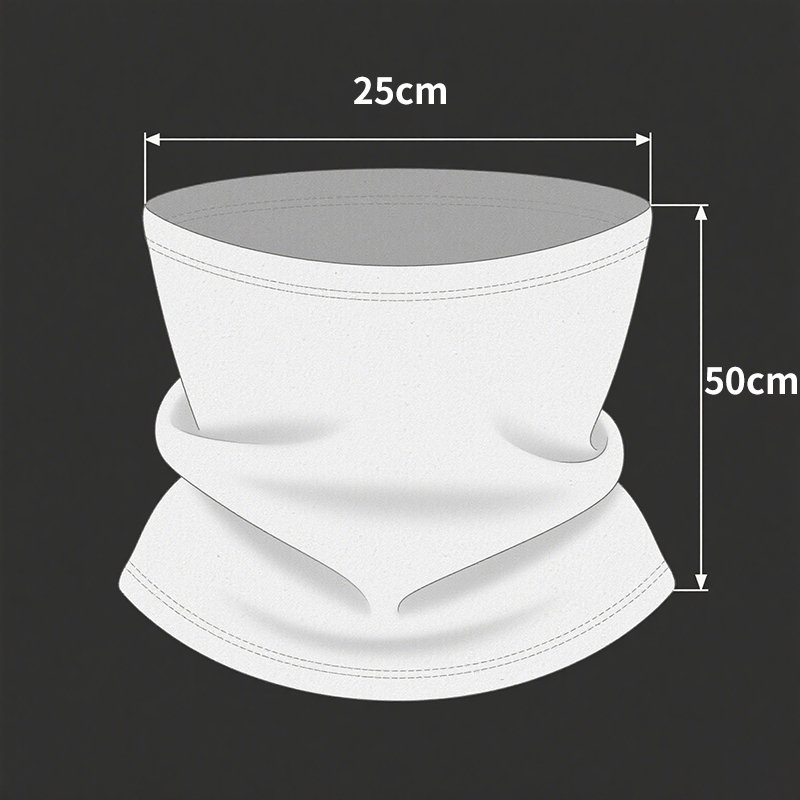
Детский шейный платок обычно имеет длину 35–45 см, а высота — 12–20 см. Взрослые увеличенные шейные платки обычно имеют длину 55–65 см, а высота — 25–35 см, что подходит для людей с особыми потребностями или людей высокого роста.
Как носить шейный гетр
1. Носить как шейный гетр: Наденьте шейный гетр прямо на шею и дайте ему естественно спадать на грудь или спину. Этот метод может защитить вашу шею от прямых солнечных лучей, ветра и холода, а также может играть определенную декоративную роль.
2. Носите как маску: натяните шейный гетр на нос и рот, закройте лицо и оставьте открытыми только глаза. Его можно использовать для защиты от пыли, пыльцы, ветра и песка или для сохранения тепла рта и носа в холодную погоду. В видах спорта на открытом воздухе, таких как езда на велосипеде и бег, он также может предотвратить прямое попадание холодного воздуха в дыхательные пути и уменьшить раздражение дыхательных путей.
3. Носите как шляпу: Растяните шейный гетр и накройте голову, как будто надеваете шляпу, чтобы защитить голову и уши от солнца и холода. Некоторые шейные гетры также можно складывать, чтобы сформировать разные стили шляп, например, шляпы рыбака, кепки-утконосы и т. д., чтобы повысить модность и практичность.
4. Носите как повязку на голову: оберните шейный гетр вокруг лба и завяжите волосы сзади. Он может не только зафиксировать волосы, но и служить украшением. Он также может впитывать пот и сохранять лоб сухим. Подходит для использования во время занятий спортом или в жаркую погоду.
5. Носите как временную подкладку для ремня рюкзака: Если ремень рюкзака тонкий, это может вызвать дискомфорт в плечах в течение длительного времени. В это время вы можете обернуть шейный гетр вокруг ремня рюкзака в качестве подкладки, чтобы увеличить площадь контакта между ремнем рюкзака и плечом, уменьшить давление и повысить комфорт переноски.
6. Капюшон: просто наденьте шейный платок на шею, а затем натяните его на голову, пока не останется только лицо.
7. Резинка для волос: Вы можете привязать шейный гетр непосредственно к хвосту и использовать его в качестве резинки для волос.
8. Напульсник: оберните шейный шейный бандаж непосредственно вокруг запястья и используйте его как напульсник, чтобы вытирать пот.
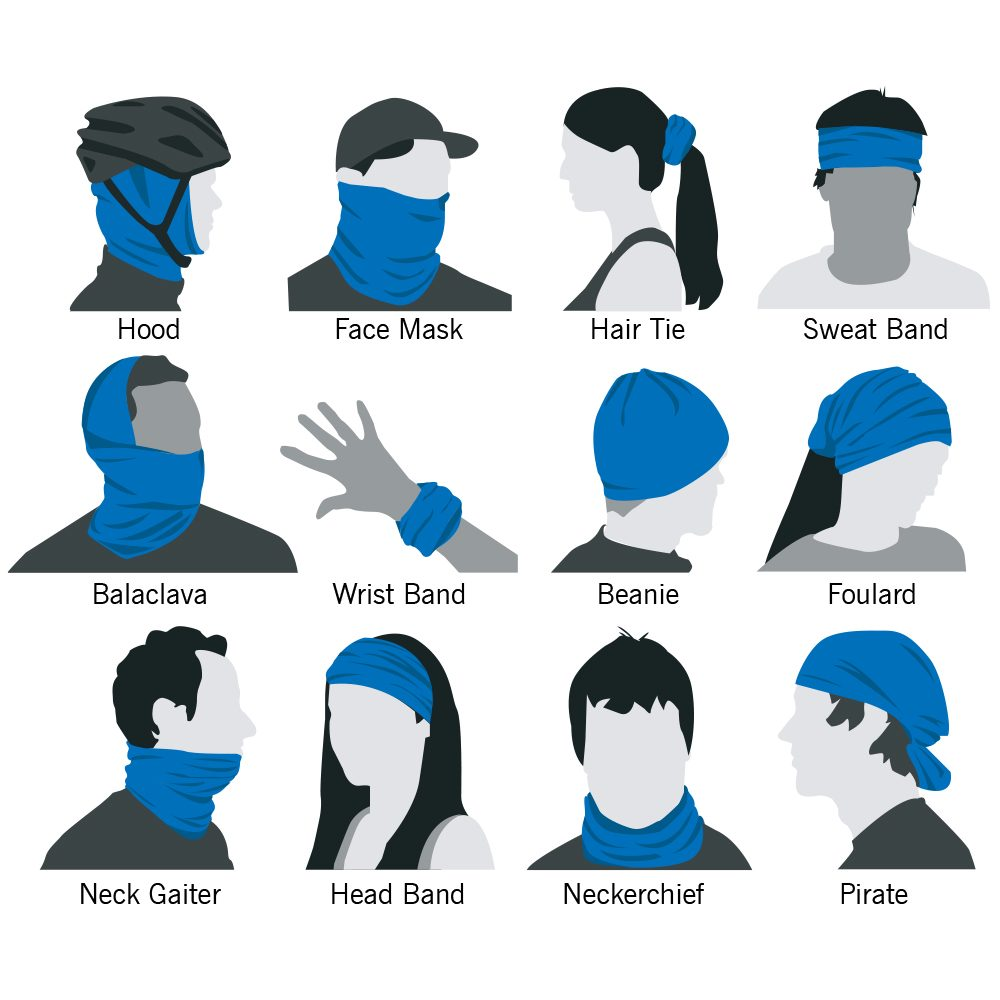
Как выбрать подходящий шейный платок, на что следует обратить внимание при покупке
При выборе шейного платка необходимо учитывать множество факторов, в первую очередь следующие: материал, размер, функциональность, стиль, бренд и качество, цена и т. д.
1. Материал: Вам необходимо выбрать материал для вашего шейного гетра в соответствии с вашими потребностями и сценариями использования. Если вы занимаетесь на открытом воздухе в жаркую погоду, вам следует выбирать быстросохнущие и дышащие материалы, такие как наше полиэфирное волокно; в холодную погоду вам следует выбирать теплые материалы, такие как наша шерсть или акриловое волокно; если у вас чувствительная кожа, вы можете выбрать натуральные и мягкие материалы, такие как хлопок или бамбуковое волокно.
2. Размер: Убедитесь, что размер выбранного вами шейного гетра подходит вам. Если он слишком свободный, он может не обеспечить вам хорошую защиту и фиксацию; если он слишком узкий, он будет стеснять движения и влиять на ваш комфорт. Поэтому перед покупкой лучше ознакомиться с информацией о размере продукта и выбрать его на основе окружности головы и шеи.
3. Функция: Если вам нужны некоторые другие функции в дополнение к некоторым основным функциям. Для защиты от ультрафиолета вам нужно выбрать материалы с дополнительной защитой от солнца, которые подходят для защиты кожи во время активного отдыха; для антибактериальной функции вам нужно выбрать натуральное бамбуковое волокно или материалы с этими функциями, водонепроницаемую функцию и т. д., которые подходят для использования в плохих погодных условиях.
4. Стиль: используйте в соответствии с вашими предпочтениями и местом использования. Если вы используете для спорта, то более подходящими будут простые и легкие стили; для повседневного ношения или модных случаев вы можете выбрать шейные гетры с отличительными узорами, цветами или дизайнами, например, стили с популярными элементами или уникальными текстурами.
5. Бренд и качество: Выбирайте продукцию известных брендов, которые обычно более гарантированы с точки зрения качества, мастерства и послепродажного обслуживания. Вы можете проверить отзывы и репутацию продукта перед покупкой и понять опыт других пользователей, чтобы судить о его качестве.
Цена: Выбирайте в соответствии с вашим бюджетом. Цена на шейный платок варьируется в зависимости от таких факторов, как бренд, материал, функция и т. д. Определите разумный бюджетный диапазон и выберите экономически эффективные продукты, удовлетворяющие вашим потребностям.
Гетры против балаклавы
Шейный гетр больше подходит для ежедневного использования, поскольку имеет простую конструкцию и закрывает только шею. Он прост в использовании и не окажет большого влияния на повседневную носку. Вы можете носить его, занимаясь спортом на открытом воздухе, участвуя в мероприятиях, ежедневно отдыхая или работая. Однако балаклава отличается. Она закроет все ваше лицо и голову, оставляя открытыми только глаза. Он подходит только для использования в особых ситуациях, таких как езда на велосипеде на открытом воздухе, походы, альпинизм, катание на лыжах и другие особые виды спорта на открытом воздухе.
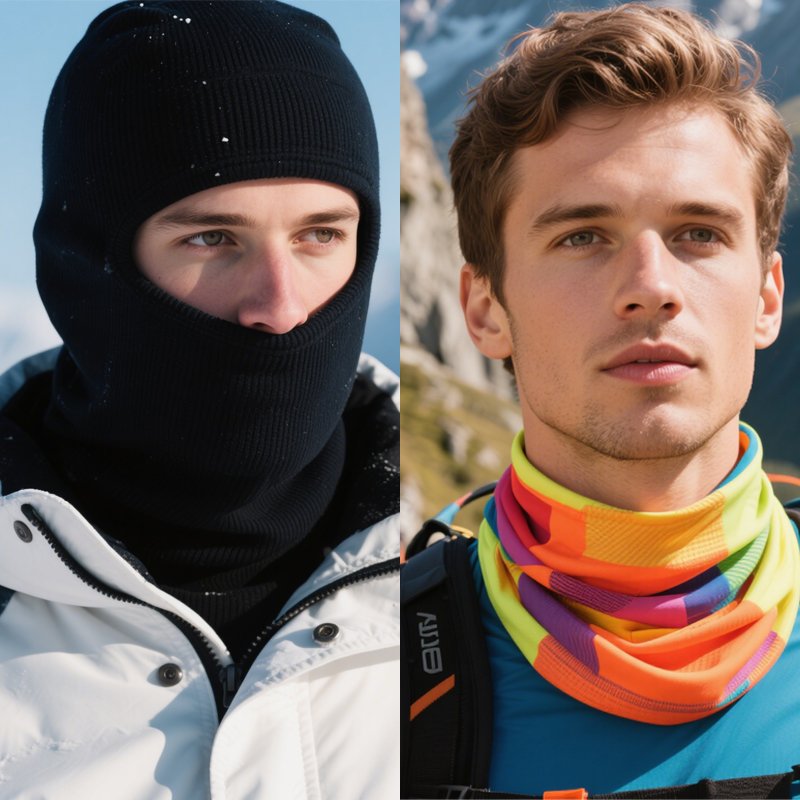
Выберите себе шейный гетр
У нас более 20 лет опыта в производстве шейных гетр, и мы сотрудничаем с более чем 2000 брендов по всему миру. Вы можете купить шейные гетры у нас по ценам производителя напрямую, что может сэкономить вам около 50% от стоимости покупки. У нас есть множество тканей, стилей, размеров и производственных процессов на выбор. Используете ли вы их для тепла, защиты от солнца, водонепроницаемости, украшения или для других особых целей, мы можем удовлетворить вас.
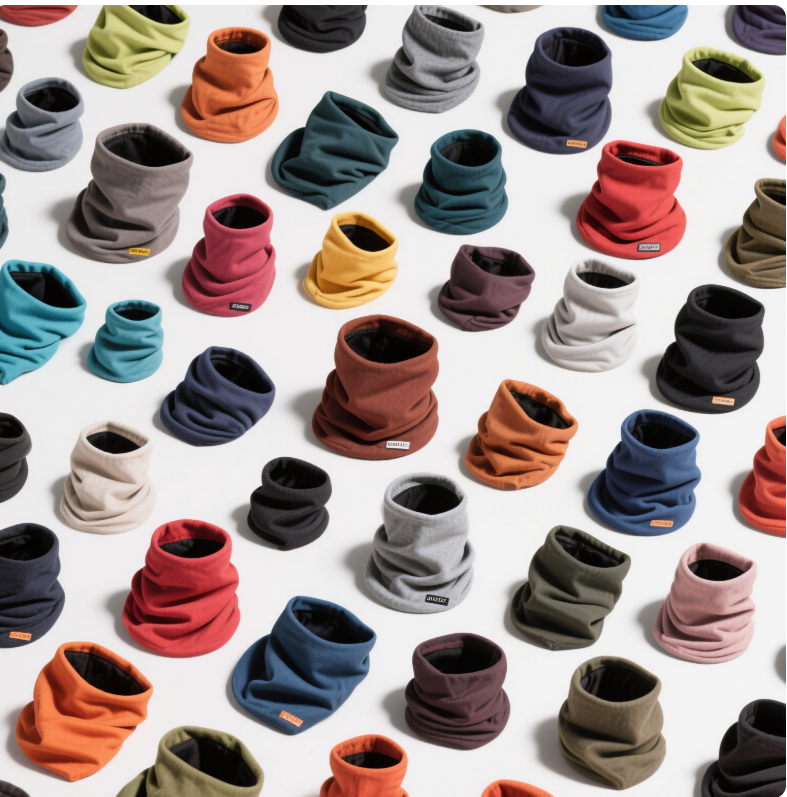
Этапы ухода и чистки шейного гетра
Методы ухода и чистки шейных гетр из разных материалов немного отличаются. Ниже приведены общие шаги:
Обслуживание
Ежедневное хранение: Когда вы не пользуетесь шейным платком, сложите или сверните его и поместите в сухое, проветриваемое место, избегайте попадания прямых солнечных лучей, чтобы предотвратить выцветание и старение материала.
Избегайте острых предметов: не допускайте царапания шейного воротника острыми предметами, такими как гвозди, молнии и т. д., чтобы не нарушить его целостность.
Обратите внимание на способ стирки: выбирайте подходящий способ стирки в зависимости от материала и избегайте использования сильных моющих средств или отбеливателей, чтобы не повредить ткань.
Уборка
1. Проверьте инструкции по стирке: сначала вам необходимо проверить этикетку с рекомендациями по стирке на шейном воротнике, полностью понять характеристики материала и требования к стирке, а затем следовать инструкциям.
2.Подготовьте теплую воду: Добавьте необходимое количество теплой воды в таз. Температура воды обычно поддерживается на уровне около 30℃. Избегайте использования горячей воды, чтобы предотвратить усадку или повреждение материала.
3. Добавьте моющее средство: насыпьте небольшое количество мягкого моющего средства, например, нейтрального стирального порошка или специального моющего средства для спортивной одежды, равномерно размешайте и дайте моющему средству полностью раствориться в воде.
4. Бережная стирка: положите шейный воротник в воду и аккуратно потрите, уделяя особое внимание пятнам. Если пятно локальное, можно использовать мягкую щетку, чтобы аккуратно потереть его, но следите за силой, чтобы не скатываться и не повредить ткань. Для некоторых особых материалов, таких как шерстяные шейные воротники, может потребоваться ручная стирка, и не трите слишком сильно, чтобы избежать деформации.
5. Прополощите: прополощите шейный воротник чистой водой, чтобы полностью удалить остатки моющего средства. При полоскании можно слегка отжать его, чтобы вода стекла, но не выкручивайте его слишком сильно, чтобы не повредить форму и эластичность шейного воротника.
6. Удалите влагу: разложите шейный платок на сухом полотенце и дайте полотенцу впитать излишки влаги, или вы можете аккуратно прижать его сухим полотенцем, чтобы впитать большую часть влаги.
7.Сушка: Повесьте шейный платок в хорошо проветриваемом месте для естественной сушки, избегая воздействия солнца. При сушке в помещении следите за тем, чтобы обеспечивалась циркуляция воздуха для ускорения сушки 8.Скорость. Для некоторых материалов, которые легко деформируются, например, шейных платков, содержащих спандекс, старайтесь сохранять их первоначальную форму при сушке, чтобы избежать растяжения.
Если ваш шейный гетр очень грязный или имеет особые пятна, вам, возможно, придется постирать его больше одного раза или использовать специальные методы удаления пятен. Но перед использованием каких-либо специальных чистящих средств или обработок лучше всего протестировать их на незаметном участке шейного гетра, чтобы убедиться, что они не повредят материал.
Часто задаваемые вопросы
Как часто следует чистить шейный гетр?
Конкретная частота чистки зависит от того, как часто вы его носите. Если вы носите его каждый день, рекомендуется стирать его каждые два дня, чтобы избежать запаха после слишком долгого ношения. Если вы не носите его часто, вам нужно только стирать его и складывать для хранения после каждого использования.
Какие виды спорта на открытом воздухе подходят для ношения шейного гетра?
Если вам не нужно, чтобы голова была полностью покрыта, шейный платок подойдет для различных видов активного отдыха на свежем воздухе. Вы можете выбрать походы, альпинизм, велоспорт, катание на лыжах, рыбалку и марафонский бег в зависимости от различных материалов и функций.
Какие размеры шейных повязок наиболее распространены?
Самый распространенный размер горловины — 25 см*50 см, что подходит для большинства размеров. Если у вас нет особых требований, размер 25*50 см обычно достаточен для ежедневного использования.
В чем разница между шейным платком и утеплителем для шеи?
Хотя и шейный платок, и утеплитель используются для защиты и согревания шеи, шейный платок обычно относится к более тонкому стилю, который также легко и удобно носить, в то время как утеплитель более толстый и используется для согревания в холодную погоду.

